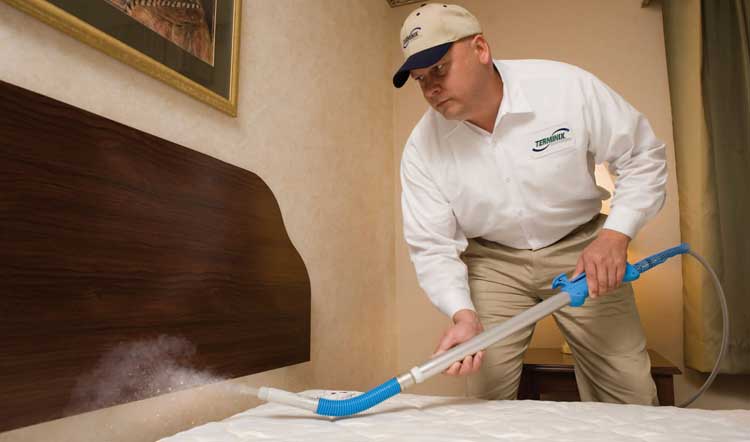Bed bugs are temporary ectoparasites that can catch a ride to your home from any number of places. This makes them a serious threat in multifamily housing dwellings like apartments and condos.
Before pest control professionals come in for a treatment, vacuum and wash all affected items (clothes, linens, toys) in hot water. This will help prevent them from spreading to other areas of your home during the process.
1. Look for a License
Bed bugs are hard to control and can have a profound effect on your quality of life. These minuscule pests spread quickly, feed on human blood and cause anxiety and stress in their victims. This is why you want to make sure you hire a licensed and certified bed bug exterminator to deal with the problem effectively.
A professionnel desinsectisation punaise de lit will have a variety of treatment methods available to them including chemical, heat and traps. They should be willing to explain the pros and cons of each and help you determine which is right for your situation.
A good bed bug company will also take the time to inspect your property and agree on a treatment plan. They will base their quotes on inspection findings and visit regularly until they find and treat all bed bugs. They should also provide you with a warranty to demonstrate their confidence in their work. Insurance carriers often ask for proof of experience and training before granting coverage for bed bug service work, especially heat treatments that incorporate mechanical equipment.
2. Check Reviews
You may have heard that bed bugs only live in mattresses and box springs, but this is a myth. These tiny insects have a wide range of hiding places, including in furniture, behind baseboards, and in the cracks of doors and windows.
If you suspect that you have a bed bug infestation, start by performing a visual inspection of your bedroom. Take off the sheets and examine the seams, tufts, and corners of your mattress and box spring. Check for shed skins (a sign that nymphs are maturing to adults) and dark spots on the fabric of your mattress.
Next, inspect upholstered furniture like couches and accent chairs for signs of bed bugs. Look in the crevices around pillows, drapery pleats, and seams, as well as under buttons and tags. Also check closets and cluttered areas for signs of bed bugs, like small piles of clothing or boxes of books. Also, consider a heat chamber treatment for your furniture, as it can kill bed bugs in hard-to-reach places.
3. Ask for References
Choosing the right bed bug exterminator is a crucial decision. Trained professionals know where these pests hide and can use professional strength treatments to destroy them. They also understand that a mattress may need to be encased or perhaps discarded, depending on the level of infestation.
In addition, they can also perform a thorough inspection of the affected rooms to determine how extensive the problem is. During an inspection, they will inspect the tufts, folds and cracks of mattresses, box springs, headboards and bed frames, look for blood spots on sheets and black fecal matter on bedding and furniture, and check for egg cases.
Prior to an exterminator’s arrival, the occupant should empty dresser drawers and closets for easier inspections. Items that can’t be laundered should be packed in plastic tote bins and sealed. The occupant should also remove switch plates and electrical outlet covers in the affected areas. Also, the occupant should make arrangements for pets, children, anyone with chemical allergies or sensitivities and elderly family members to be out of the home during treatment.
4. Look for a Company With a Reputation
When looking for a bed bug exterminator, it’s important to choose one with a good reputation. Look for reviews and a warranty to ensure that you’re getting the best service.
A true pro will work diligently to eradicate the problem with minimal disruption to your lifestyle. They’ll use a variety of treatments, including heat and Cryonite, to kill the bugs and their eggs.
In addition to treating beds, you may need to treat other areas of the home where bed bugs have gathered, such as closets and cluttered items. You can also purchase products like bed bug interceptors, which are plastic, dish-like structures that trap the pests as they try to climb up or down furniture legs.
Summary:
DIY methods rely heavily on chemicals to eliminate the bugs, and if you don’t follow proper safety protocols, you can end up with long-term health issues. A professional will understand that your family’s well-being is the top priority and follow strict safety guidelines while working with harmful chemicals.

